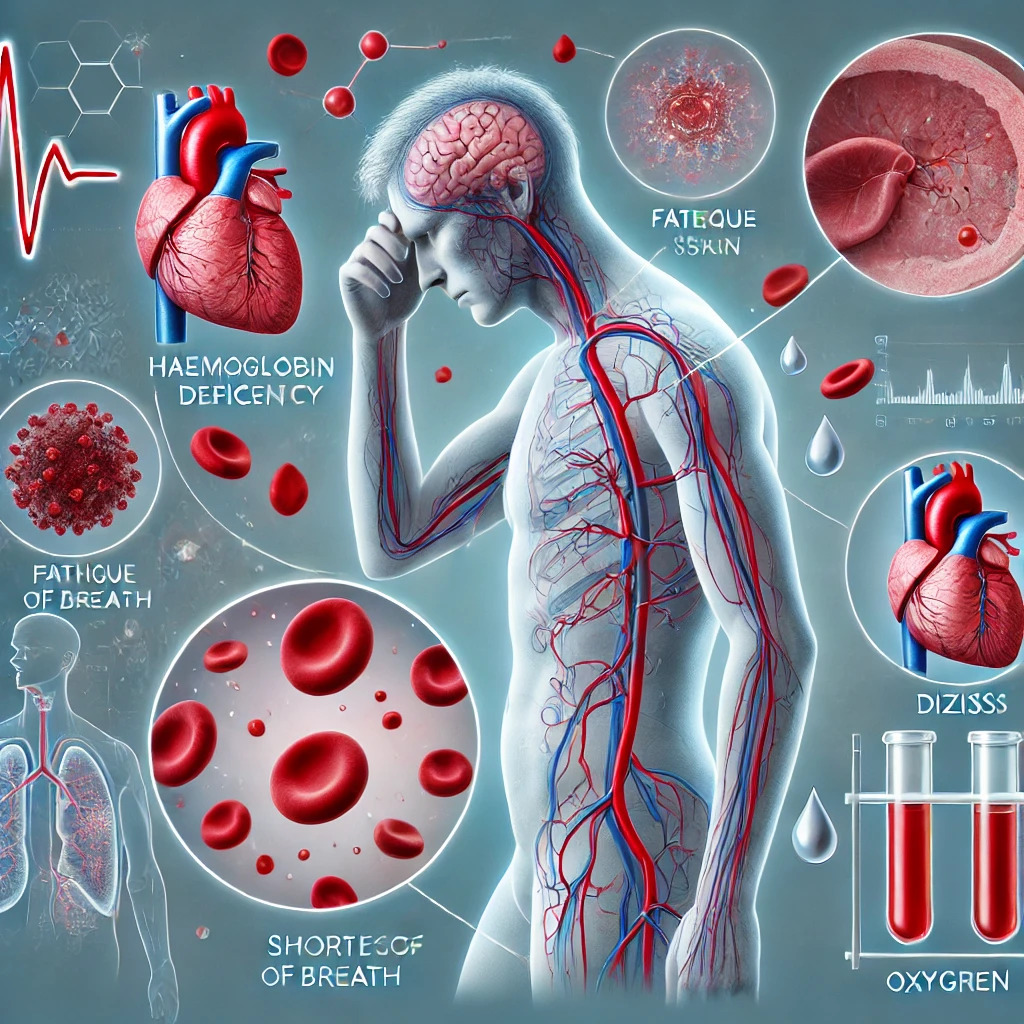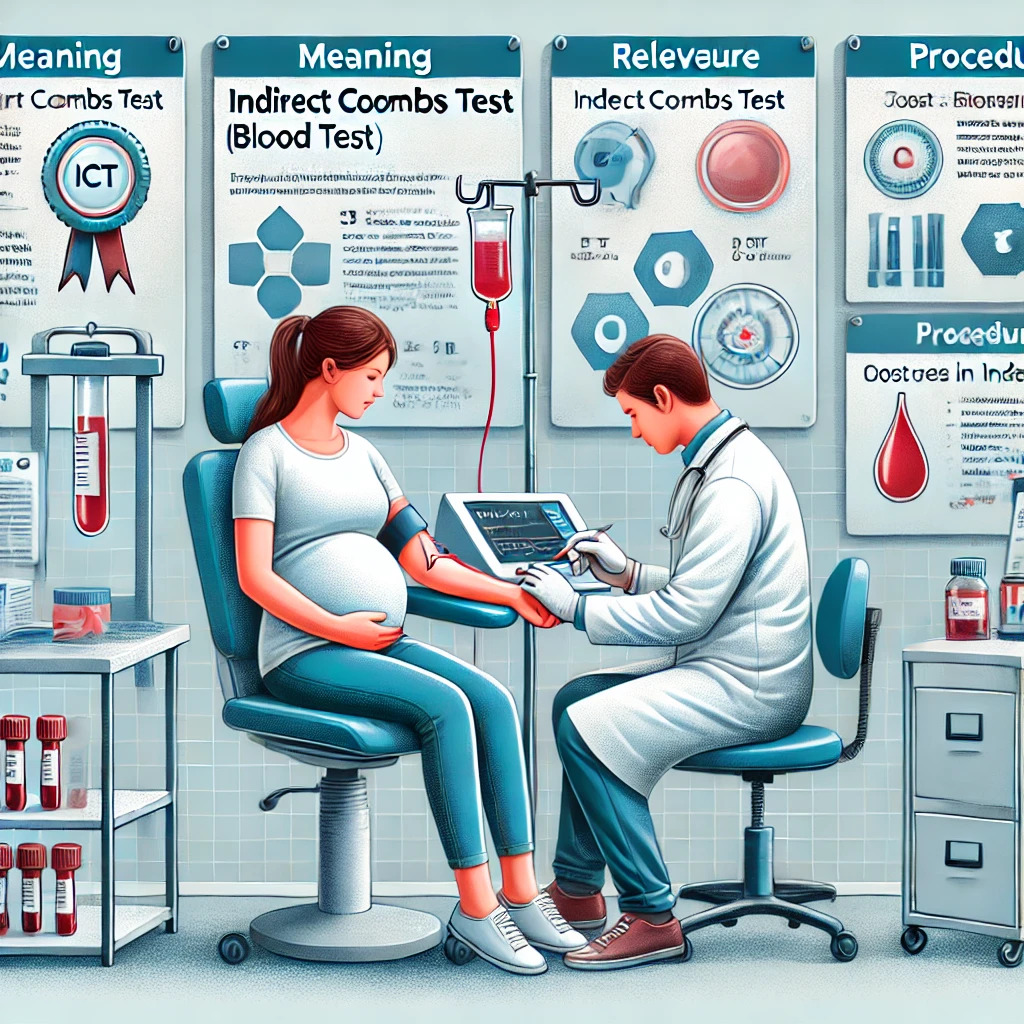CBP Blood Test: Means, Costs, Uses, And Normal Ranges
.jpg)
It is quite common for doctors to advise us on a CBP test or CBC (complete blood count) test. As this sounds too technical, one is left wondering what is a CBP test and what purpose it serves? Different blood tests tell stories about our bodies related to what is going on inside our bodies. This test is one such diagnostic tool that can reflect many things about our health and tell us about the different blood cells.
Through this blog, we will break down the CBP test's meaning, its different components, and why this test is such an important tool in helping doctors see what is going on inside our bodies and also how it helps us maintain good health.
Understanding the CBP Test and its Components
The full form of the CBP test is a Complete Blood Profile. It is generally used as an alternate term for a CBC test. This test helps doctors evaluate different types of cells in human blood.
Let us know what the CBP test contains meaning what are the different components of the CBP test. The different components it measures include hemoglobin, red blood cells(RBC), white blood cells(WBC), and platelets. Each type of blood cell has a specific role to play in our bodies to maintain overall health. As the CBP test measures these various components, it helps diagnose different health conditions. It helps monitor how the disease is progressing or responding to the treatment.
Your doctor may advise you to get this test for a routine health checkup or when you have symptoms like fatigue, weakness, frequent infections, or when you have some pre-existing health conditions. This simple and affordable blood test helps in identifying, treating, and monitoring various parameters of health. You should get this test from a reliable lab like O-Lab in Jammu to get timely and accurate CBP test results.
Blood components of the CBP test
These are the different components measured in this blood test to assess your well-being:
- RBC parameters
This test will measure the total number of red blood cells in the blood sample.
It will measure the amount of hemoglobin, which indicates the oxygen-carrying capacity of your blood.
It will also measure hematocrit, which measures the packed cell volume or the percentage of red blood cells in your blood.
- White Blood Cells
WBCs or leukocytes are an essential part of our immune system. This test will measure the total number of these white blood cells, called so as they lack colored pigments, as well as the different types of white blood cells.
Total White blood cell count, which, as the name suggests, measures the total number of white blood cells.
WBC differential or differential blood count will determine the relative percentages of the different types of white blood cells. There are five types of white blood cells, and their percentages will be shown. These five types of WBCs are:
- Neutrophils which are the most abundant and mainly fight against bacteria.
- Lymphocytes fight both bacteria and viruses. These are again of two types which are T cells and B cells.
- Monocytes engulf and destroy various pathogens.
- Eosinophils are involved in allergic reactions and also fight pathogens.
- Basophils are involved in inflammatory and allergic responses in our body.
- Platelet count
These are also called Thrombocytes. These are also measured in the CBP blood test. Platelets stop bleeding as they help in forming a clot. But their role in healing extends bey.
Importance and Uses of CBP Test
This test is like a report card for a person’s health which can even help the doctors in identifying future risks.
Let us see why the CBP test is done:
- For diagnostic purposes- This test can identify early signs of health problems or before the health problems have begun. Different blood components measured in the test can help to learn the causes of anemia, different infections, inflammatory disorders, blood cancers, and bleeding disorders.
- For monitoring purposes- a CBP blood test can also monitor how a disease is progressing. It can also monitor how a disease is responding to treatment as changes in blood parameters will be there.
- To help assess risk factors- this test may also be useful in detecting underlying risk factors for diseases of the cardiovascular system, respiratory system, kidneys, or blood clots.
Who should get a CBP (complete blood profile) test?
You may get this test on your own, or your doctor may think you need a CBP or CBC blood test.
You should get this test:
- When your doctor advises a routine health checkup, it can help identify early signs of any future health problems.
- If you feel weak, have dizziness, or have a fever.
- If your doctor wants to check for anemia, any infections, disorders of the blood, etc.
- When your doctor orders this test before surgery, chemotherapy, or other procedures.
- If there is a family history of chronic diseases or blood-related disorders.
- If you are pregnant.
- After you have recovered from an illness.
Normal Range of CBP Test and Interpretation
These are the normal ranges for various components of the CBC test -
- Haemoglobin
- Males: 13-16 gm/dL
- Females: 12-15 gm/dL
- RBC count
- Males: 4.3-6.2 million/?L
- Females: 3.8-5.5 million/?L
- Hematocrit
- Males: 40-52%
- Females: 37-46%
- Red Cell Distribution Width (RDW)
- 35-47 fL
- Mean corpuscular volume (MCV)
- Males: 82-102 fL
- Females: 78-101 fL
- Mean corpuscular haemoglobin (MCH)
- 27-34 pg
- Mean corpuscular haemoglobin concentration (MCHC)
- 31-35 gm/dL
- WBC count
- 4-10 10^3/?L
- Absolute leukocyte count
- Neutrophils- 2-7 10^3/?L
- Lymphocytes- 1-3 10^3/?L
- Monocytes- 0.2-1.0 10^3/?L
- Eosinophils- 0.05-0.5 10^3/?L
- Basophils- 0.02-0.1 10^3/?L
- Differential leucocyte count
- Neutrophils- 35-80%
- Lymphocytes- 20-50%
- Monocytes- 2-12%
- Eosinophils- 0-4%
- Basophils- 0-2%
- Platelet count- 1.5-4.5 lac/L
- Mean Platelet Volume (MPV) - 6-9.6 fL
These are average values as normal range.
Also Read: - danger level of sgpt and sgot symptoms
Interpretation of the CBP test results
If the ranges fall within the normal ranges for the particular lab, then it means that the test is normal. A normal CBD test does not rule out underlying diseases. Your doctor may order other tests if you have any symptoms or a disease.
With abnormal ranges, one may have symptoms such as:
- Weakness and fatigue
- Pale skin or conjunctiva
- Shortness of breath
- Body aches or joint pains
- Delayed clotting or other clotting abnormalities
- Weight loss
- Swelling
- Hair loss
- Mood changes
- Dry skin
- Dizziness
- Brain fog
If the Red Blood Cell count is low
You may have anaemia which can be due to iron deficiency or other factors. You can have symptoms like fatigue, weakness, pallor, cold hands and feet, hair loss, brittle nails, sores in the mouth, sore tongue, dizziness, etc.
If the White Blood Cell Count is High
It can be due to infections of bacterial, viral, fungal, or parasitic origin. Inflammation and immune disorders can also raise the white blood cell numbers. Certain blood cancers, bone marrow disorders, stress, smoking, etc, can also cause an increase in numbers.
You can have symptoms like fever, chills, muscle aches, fatigue, swollen lymph nodes, night sweats, etc.
If the White Blood Cell count is low
This condition is called leukopenia. You will be more susceptible to infections when your white blood cells are abnormally low in numbers.
It can be due to bone marrow issues due to certain cancers, aplastic anaemia, chemotherapy or radiation.
It may be due to viral infections like HIV, hepatitis, or other immune system disorders.
Severe infections will also lower your WBC numbers.
Immunosuppressant drugs, vitamin deficiencies, and inherited disorders may also cause a dip in these numbers.
You can have symptoms such as frequent infections, fever, weakness, sores in the mouth, skin infections, candidiasis, etc.
If the Platelets are low in numbers
It is called Thrombocytopenia. It can be due to bone marrow problems that impact platelet production, like aplastic anemia, certain cancers, and nutritional deficiencies. Certain medications, heavy metal exposure, toxins in pesticides, etc, may also impact platelet production and count.
Certain conditions may lead to increased destruction of the platelets like some autoimmune conditions, severe infections, and enlarged spleen.
You might have easy bruising, excessive bleeding from injuries or cuts, heavy bleeding in periods, and nose bleeds.
Also Read: - Tc Dc blood test normal range
If the Platelets are high in numbers
This condition is called Thrombocytosis. You may have secondary thrombocytosis where an infection, inflammation due to allergies or autoimmune diseases like RA or other causes, surgery, trauma, some medicines, etc, can cause increased platelet production.
Another reason can be primary thrombocytosis where bone marrow has a defect or a problem and leads to overproduction of platelets without any apparent cause.
Splenomegaly and smoking can also raise platelet numbers.
As we know this can make the blood thicker and more sticky, one can have headaches, chest pain, numbness or tingling in extremities, vision problems, blood clots, hypertension, etc.
It is important to remember that an increase or decrease in the number of percentages of different components of the CBC test alone won't provide a definite diagnosis. Sometimes, these deviations from the normal ranges may not be harmful at all. At other times, even small deviations may be a sign of something serious. And then there will be times when these parameters may even be normal with a health condition.
A doctor investigates your signs and symptoms, your past medical history, any hereditary factors, and your blood tests before making a diagnosis. You may even need additional tests. Always avoid self-diagnosis and self-medication.
CBP Test Procedure
It is one of the simplest blood tests where preparation is not needed. You will require fasting only when you are also getting other tests that require fasting. The CBP blood test alone does not require any fasting.
Stress, lack of sleep, not being hydrated enough, and menstrual cycle can impact the reports.
Your doctor should be aware of the supplements and medications you are taking before any blood test.
A phlebotomist (a trained health care professional to take blood samples) will tie a tourniquet around your arm and clean the area with an antiseptic swab. A fine needle is inserted into the vein to collect a small blood sample for the CBP or CBC test. The needle is then removed and the tourniquet is also removed. A bandage may be placed or you can press over the puncture spot with a swab. The test is over and you can even get it done at home.
Conclusion
The information in this blog should have helped clarify the meaning and purpose of the CBP test. This simple blood test is a sneak peek into what is going on inside your body. Every detail like haemoglobin levels, hematocrit, RBC numbers, WBC numbers, etc, is a guide for your doctor to see if you are in peak health or require some intervention.
This test also helps you to understand how your health is and how your body functions. As regular CBP tests are essential for preventive healthcare and diagnosis of medical conditions along with other tests, you should seek to get your CBP test from a reliable lab like O-Lab for affordable, accurate, and timely results. Now you can get a home collection facility and get your tests without delay.
FAQs
- What is the CBP test cost in India?
- The test cost for a CBC test can vary based on city, location, type of lab, etc. It generally ranges between 200-500 INR across different locations.
- Are CBC and CBP tests the same?
- Yes, both these tests are the same. CBC means complete blood count while CBP means complete blood profile and both refer to the same test. Some labs may include ESR and peripheral blood smear in the CBC blood test in which case the test cost will go higher.
But generally, CBC and CBP tests are used interchangeably.





